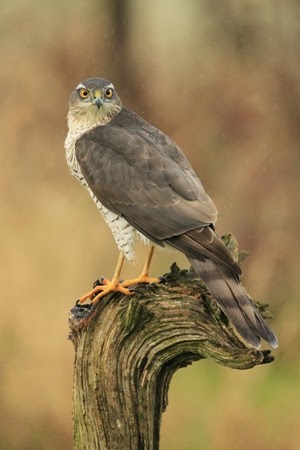I'm just getting ready for my new exhibition all about the wealth of wildlife to be found in Yorkshire and I've been looking back at the remarkable breeding season we've had here in Thixendale -particularly in my garden at Fotherdale.
I've watched tawny owls, kestrels and swallows, from the moment they first searched for a nesting site to the first flights of their fledglings.
And I've been able to photograph them throughout, so that many of the birds now appear in my latest paintings.
Among my favourite was this pair of swallows raising their chicks in a storm lantern hanging on my back porch! My painting of the event will highlight my new exhibition which opens on Saturday.
This kestrel painting is also a new one and is the result of hours of watching and photographing the kestrel from the moment he won the annual tussle for the best nest box in Fotherdale.
My new nest box cameras have revealed new secrets, including the fact that battles for next year's nesting sites have already begun.
Two weeks ago I reported how jackdaws, kestrels and tawny owls were all vying for one particular box and the battle is still not over. This week I captured the tawny owl digging a nest scrape in it.
It seems that at the moment the kestrel has possession of it during the day and at night the tawny owl has it!
But of all the season's great breeding stories, I'm proudest of the barn owls.
This pair live about a mile from my gallery and I have a particular interest in them
after helping them through the previous winter with a daily supply of food.
They had become so accustomed to my daily offerings that if I stood very still
the male would take food off the top of my hat!
Barn owls had a disastrous breeding season in 2013 and the
restoration of barn owl populations in Thixendale depended on their performance
this year.
And they didn’t disappoint. By Valentine’s Day this pair was
loved up and already roosting in a nest box that I had put up for them. I had
positioned the box opposite a tree-top hide so that I could watch the action at
eye level.
It was so exciting to be able to watch, via my new CCTV,
what happened once they disappeared into the entrance hole to the nest box.
I became privy to their entire courtship process! It was
endearing to hear the soft, chittering calls of the male as it appeared in the
box to offer the female gifts of food and see the quiver of her wings as she replied. Whenever he entered the box she would
physically tremble with submission.
The first egg was laid on April 1st and six eggs
followed at three day intervals, with the last laid on Good Friday. For me these were precious Easter eggs because they represented real hope.
Only six of the seven fledged, but this was still a healthy
proportion and I was delighted when not long after they had left the nest I saw
the male mating the female again and she went on to lay five more eggs!
Again it's been great having new painting models about, but I'm so very pleased for the future of barn owls here on the Wolds.

















.JPG)



































